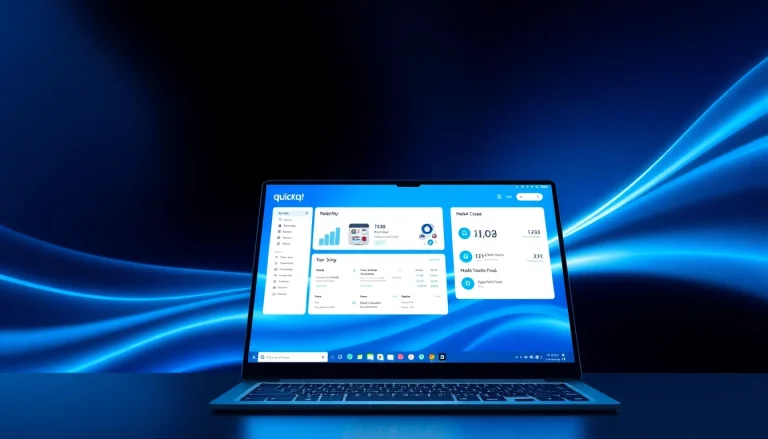Introduction to Thermal Management Materials
In today’s fast-paced technological landscape, the demand for effective thermal management solutions has never been greater. As electronic devices become increasingly compact and powerful, the need to dissipate heat efficiently is paramount. Thermal management materials serve as crucial components in enhancing the performance of these devices, ensuring they operate reliably while maintaining an optimal temperature. This article delves into the various aspects of thermal management materials, including their types, applications, benefits, challenges, and future trends.
What are Thermal Management Materials?
Thermal management materials encompass a broad range of products designed to facilitate effective heat transfer and regulation within electronic components. These materials play an essential role in preventing overheating, improving performance, and extending the life of electronic devices. They can include thermal interface materials (TIMs), gap fillers, phase change materials, adhesives, and various insulation types.
Importance in Electronics
The significance of thermal management materials cannot be overstated in the realm of electronics. With the continuous drive towards miniaturization and higher power densities in electronic devices, managing heat becomes critical. Overheating can lead to performance issues, hardware failures, and permanent damage. Therefore, implementing effective thermal management strategies ensures that devices not only perform at their best but also meet longevity standards and safety requirements.
Types of Thermal Management Materials
There are several categories of thermal management materials, each with unique properties and applicable use cases:
- Thermal Interface Materials (TIMs): TIMs are secondary materials placed between heat-generating components and heat sinks. They enhance thermal conduction and reduce thermal resistance within electronic assemblies.
- Gap Fillers: Gap fillers are soft, conformable materials that fill the space between uneven surfaces to improve thermal contact and heat dissipation.
- Phase Change Materials (PCMs): PCMs absorb and release thermal energy during phase transitions, providing stability in temperature regulation.
- Thermal Adhesives: These adhesives bond components while simultaneously providing effective thermal conductivity, serving dual purposes in system design.
- Insulation Materials: Insulators such as silicone and polyurethane foams prevent heat loss and protect sensitive electronic components from temperature spikes.
Key Applications of Thermal Management Materials
Consumer Electronics
In consumer electronics, where device performance dictates user experience, effective thermal management is crucial. Smartphones, laptops, tablets, and gaming consoles require efficient heat dissipation systems. For instance, the integration of thermal interface materials in CPUs and GPUs prevents thermal throttling, which negatively impacts processing speeds. Brands are increasingly adopting materials like graphite pads and thermal pastes to enhance performance and user satisfaction.
Industrial Equipment
Industrial machinery often operates in harsh conditions where temperature fluctuations can be extreme. Thermal management materials enhance the reliability and safety of equipment such as electric motors, drives, and transformers. Using materials that not only provide high thermal conductivity but also withstand adverse weather conditions can significantly reduce operational costs and downtime.
Automotive Applications
The automotive industry has been transforming with the rise of electric and hybrid vehicles, creating new thermal management challenges. Thermal interface materials are used to manage the heat generated by battery packs, power electronics, and electric motors. For example, high-performance thermal greases and conductive pads help maintain optimal temperatures, enhancing battery life and performance.
Benefits of Using Thermal Management Materials
Enhanced Performance and Longevity
Implementing effective thermal management materials directly enhances the performance and longevity of electronic devices. By ensuring efficient heat dissipation, components can maintain optimal operating temperatures, reducing the risk of failure and extending their operational lifespan. This is particularly crucial in applications where reliability is paramount, such as in aerospace and medical equipment.
Cost-Effectiveness in Designs
Investing in appropriate thermal management materials can lead to significant cost savings in the long run. By preventing overheating, manufacturers can avoid costly repairs and product recalls. Furthermore, products designed with effective thermal solutions often require less power consumption, leading to energy savings and reduced operational costs.
Environmental Considerations
As environmental regulations tighten, many industries are turning to thermal management materials that are not only effective but also eco-friendly. Choosing sustainable materials helps companies comply with legislation and appeals to environmentally conscious consumers. Developing thermal solutions that minimize energy usage and waste contributes to a lower carbon footprint across production cycles.
Challenges in Selecting Thermal Management Materials
Material Compatibility
One of the primary challenges in selecting thermal management materials is ensuring compatibility with the various components of the thermal system. Factors such as thermal expansion coefficients, chemical resistance, and adhesion properties must be considered to prevent degradation over time or malfunction.
Thermal Resistance Issues
While selecting thermal management materials, it’s vital to assess their thermal conductivity and resistance properties. High thermal resistance can prevent efficient heat transfer, negating the benefits of using such materials. Therefore, thorough testing and validation against functional requirements are essential to ensure optimal performance.
Cost versus Performance Trade-offs
Manufacturers often face the dilemma of balancing cost and performance when selecting thermal management solutions. High-performance materials can come at a premium price, which may not align with budget constraints. It is crucial to evaluate the long-term benefits versus initial costs to find a suitable balance that meets project specifications without overshooting budgets.
Future Trends in Thermal Management Solutions
Advances in Material Technologies
The ever-evolving landscape of electronic designs drives innovation in thermal management materials. Advances in nanotechnology, for instance, are paving the way for the development of materials with enhanced thermal conductivity and reduced weight. New composites and hybrid materials are being engineered to meet increasingly demanding applications.
Market Demands and Innovations
As the demand for compact and efficient electronics continues, the market for thermal management solutions will likely expand. Innovations in materials driven by user demands for higher performance and lower thermal resistance will spark ongoing research and development efforts, leading to novel solutions tailored to specific applications.
Integration with Emerging Technologies
Emerging technologies such as artificial intelligence, the Internet of Things (IoT), and renewable energy solutions are reshaping the landscape of electronic applications. These technologies rely heavily on effective thermal management to maintain performance integrity. As devices become more integrated and intelligent, the need for advanced thermal solutions will rise, pushing manufacturers to innovate continually.







